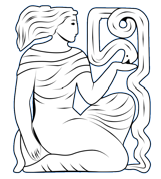| Professor Janet Hargreaves, University of Huddersfield | The UKAHN Bulletin |
| Volume 8 (1) 2020 | |
 Despite its title, which implies a focus on nursing, this book is about Voluntary Aid Detachment (VAD) Canadian and Newfoundland women, in both nursing and non-nursing roles: it is no less interesting for that. Using a wide range of archival sources Linda Quiney has traced and documented the 2,000 or so women from Canada and Newfoundland who were accepted for active service. Most (around 1,500) served on their own home front with just 500 joining the colonial contingent posted to Britain and France.
Despite its title, which implies a focus on nursing, this book is about Voluntary Aid Detachment (VAD) Canadian and Newfoundland women, in both nursing and non-nursing roles: it is no less interesting for that. Using a wide range of archival sources Linda Quiney has traced and documented the 2,000 or so women from Canada and Newfoundland who were accepted for active service. Most (around 1,500) served on their own home front with just 500 joining the colonial contingent posted to Britain and France.
There are, as may be expected, similarities and parallels with British VADs, not least because the propaganda at the time and the image that has been nurtured since is so iconic. However, this research also draws out the distinctive Canadian and Newfoundland response and for me includes many ‘I never knew that’ moments.
Recruitment was targeted at the daughters of middle class, first- and second-generation British settlers, with a general motivation to support the empire, before the emotional response to the deaths of their own brothers and lovers made the conflict more personal. Although there are notable exceptions (a smaller group of ‘respectable’ working class women did manage to be accepted), the lack of pay and costs of training and uniforms acted as effective barriers to anyone without financial security.
Most were well educated: universities had recruitment schemes and many students trained and volunteered through their vacation. Many employers were supportive, releasing women from, for example, government offices, banks and schools, with their jobs held open for them until they were released form duty. Volunteers were encouraged to write about their experiences and letters were published in company journals to promote their business’s patriotism and involvement.
The 500 who served overseas were allocated to hospitals and convalescent homes in England and France. They faced a particular difficulty which highlights one of the tensions around the minimal training available to VADs and the accusation that they were ‘diluting’ the nursing response. The Canadian Army Medical Corp refused to have any VADs serving in their hospitals and consequently Canadian VADs were often prevented from doing the very thing they had volunteered for – nursing their own men. A compromise was reached which enabled them to housekeep and befriend wounded Canadian soldiers in convalescent settings, thus VADs were able to offer welcome home comforts and care without overstepping the perceived professional boundaries established by the Medical Corps. Despite this apparently genteel role, the Canadian VADs did experience their fair share of exhausting and traumatic work, and some gained access to challenging roles such as ambulance drivers.
The Canadian and Newfoundland VADs who remained on the home front fulfilled military convalescence postings but also plugged gaps caused by regular staff being on active service. Two significant incidents make their home front work distinctive. In December 1917 the SS Mont Blanc exploded in Halifax harbour, killing over 1,600 people, causing wide spread damage with thousand injured and homeless and many children orphaned. Around 100 trained VADs were in the Halifax area and they made a significant contribution to the emergency relief, saving lives and using their skills in this unexpected local tragedy. The following year the influenza pandemic overshadowed the threats from the war. VADs across Canada found themselves in intensely challenging situations, for example working in quarantined communities often alone with few resources and many sick in need of constant care.
This book is a well written, good read. It added to my understanding of the VAD experience but more importantly it filled a gap in my knowledge of the history of Canada and Newfoundland and left me wanting to know more.
